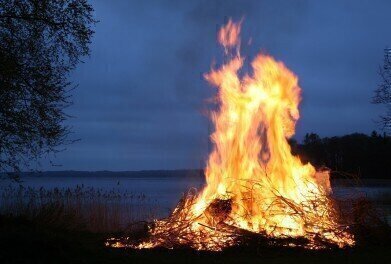Air Monitoring
How to Minimise the Environmental Impact of your Bonfire
Nov 07 2019
With Guy Fawkes night imminent, adults and children all over the UK will be looking forward to witnessing spectacular fireworks displays, playing with sparklers and, perhaps most hotly anticipated of all, creating their own bonfire. Whether it’s in your back yard or as part of a local community celebration, bonfires can be incredibly exciting – but also hugely damaging to the environment.
With that in mind, the Environment Agency have released a set of guidelines for those planning to build their own bonfire to ensure that any detrimental impacts on urban air quality, animals living in the vicinity and the surrounding environment in general are kept to a minimum. Their advice includes the following pointers:
- Storage. Prior to building the bonfire and setting it alight, it’s imperative to ensure that the material you plan to use is kept in a safe, dry place away from flammable substances. As well as preventing the possibility of an unwanted fire before time, this will also avoid moisture from compromising the combustibility of the materials.
- Materials. Speaking of which, it’s also hugely important to make sure you are using the right materials for the job. Timber, untreated wood and tree branches are all ideal fuel sources, while small amounts of foliage, paper and cardboard are suitable as well. Things like glass, metal, plastic or rubber should never be included.
- Size. A well-controlled fire is one that should never be in danger of becoming too large. It’s important to consider where you plan to build it and make sure that the size will be appropriate for the space; for example, one in your back garden should be smaller than one in an open field. If necessary, take measures to restrict the fire within a certain area.
- Location. With regard to the location, a bonfire should never be built in close proximity to trees, fences, wooden structures or other combustible materials to prevent unwanted spreading. It should also be staged well away from animal habitats such as bird boxes or bat nests and it’s a good idea to make sure no wildlife is nearby before lighting the fire.
- Timing. If possible, the bonfire should be built on the day of combustion itself, or as close to the time you plan to set it alight as possible. This is because leaving combustible materials exposed to the elements is neither good for them nor for the environment and poses a potential fire safety risk.
While eco-friendly conduct might be the last thing on everyone’s mind, it’s important to ensure that the annual tradition of burning the Guy on a bonfire doesn’t contribute to the already serious problem of air pollution in the UK. Elsewhere, India is now focusing on environmental monitoring after criticism of the fires and fireworks lit during the festival of Diwali caused similar problems there. Let’s hope that the same scenes are not seen in Britain this Bonfire Night.
Digital Edition
IET 34.2 March 2024
April 2024
Gas Detection - Biogas batch fermentation system for laboratory use with automatic gas analysis in real time Water/Wastewater - Upcycling sensors for sustainable nature management - Prist...
View all digital editions
Events
Apr 22 2024 Hannover, Germany
Apr 22 2024 Marrakech, Morroco
Apr 23 2024 Kuala Lumpur, Malaysia
Apr 23 2024 Kintex, South Korea
Apr 23 2024 Edmonton, AB, Canada


















